-
About
- About Listly
- Community & Support
- Howto
- Chrome Extension
- Bookmarklet
- WordPress Plugin
- Listly Premium
- Privacy
- Terms
- DMCA Copyright
- © 2010-2025 Boomy Labs

 Mehul Patel
Mehul Patel
Listly by Mehul Patel

Heat exchangers remain an integral part of industries to look after heating and cooling requirements. Being an essential device, there has been phenomenal research done to optimize its performance, reduce weight and achieve compactness in the design with same heat transfer capabilities. However, requirements from a particular heat exchanger vary based on its application, requiring customized design features.
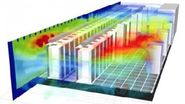
The modern organizations rely heavily on computer services, often compensated by the data center legacy. Its utilization has grown by leaps and bounds with further addition of cloud computing and virtualization technologies.

As global emission levels continue to rise at an alarming rate, automotive manufacturers are strained to leverage their contribution towards developing greener vehicles. The top contributing pollutants from a vehicle includes Carbon Monoxide (CO), Unburned Hydrocarbons (UHC) and Oxides of Nitrogen (NOx).

The automotive industry thrives on innovation, and there are so many new, fuel efficient and sleek car designs flooding the market. In such a highly competitive environment, automobile manufacturers are constantly driven by the need to improve designs.

Managing the thermal conditions under the hood of passenger cars is of a crucial importance. The underhood typically consists of two main heat sources: radiator and engine that develop high temperature zones, which are required to be carried away to protect the compartment from the damage.
Innovation is a key objective that engineers are focused onto, when developing or devising products. Over the years, product development methodologies have advanced as market demands shifted from conventional requirements towards more energy efficient and innovative solutions. The collaboration between industrial engineers and research scholars has provoked innovative approaches in engineering design that encourages reverse engineering, use of smart materials and advanced simulation technologies.
The aid of computers in automobile design has improved performance by allowing for experimentation with unconventional designs and processes that previously seemed impossible. Manufacturers and designers consistently evaluate newer concepts that promote environmental friendliness and efficiency improvement. These concepts wouldn't have been possible without computational fluid dynamics (CFD).

Aerodynamic studies on vehicles have become a mandate for manufacturers. Whether using wind tunnel tests or using CFD simulations, studying the impact of air flow over the exterior body of the vehicle is crucial, in order to reduce the drag forces and improve fuel efficiency.

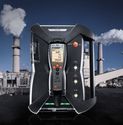
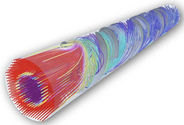
The potential of CFD simulations is increasingly being exploited in many modern engineering fields. However, the use of CFD techniques is more restricted to manufacturing domains, to study and optimize the performance of equipments and systems involving fluid flows. Yet, recent advancements in scanning and computing technologies have opened a whole new set of opportunities in biomedical engineering field.

Exhaust gas streams emitting from industrial process plants consist of harmful pollutants, which are carried away for sufficiently large distances from the source. The control of these pollutants dispersion is mandatory to avoid spreading of toxic gases into urban areas nearer to plant locations.
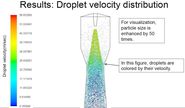
Most often, computational fluid dynamics (CFD) is seen as a replacement tool against experimental investigations. Engineers try to calibrate the results obtained through CFD to match exactly with the real world conditions; however, the reality is that CFD results always differ.

Many industrial applications involve fluid flow through porous media that directly affects their performance. Filters, packed beds and perforated plates are some of the examples of porous media through which fluid flow occurs. While different phenomena and multiple fluid phases exist, it is extremely complex to determine the efficiency of the media through physical experimentation.
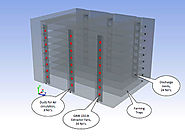
Vertical farming is an innovative solution to cultivate plantation within a skyscraper greenhouse. However, in order to ensure sufficient air flow circulation along with artificial lighting, these units require effective placements of fans, air ducts and vents.

The louver profile developed through CAD model was utilized to perform CFD simulations. The simulation domain was identified and flow analysis from both the directions was performed. The pressure drop values were estimated across the louver grill.

Hi-Tech assisted a research scholar from Germany in developing fan design to maintain the required pressure difference for radiator application. The customer’s primary concern was to develop the fan design to work within the specific pressure difference values.

A leading air pollution control systems manufacturer approached Hi-Tech for a CFD solution to determine SO2 dispersion from the industrial stack.

A leading infrastructure enterprise from India partnered with Hi-Tech to measure the performance of their HVAC system designed for the international airport through Computational Fluid Dynamics.
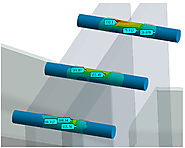
Hi-Tech assisted a leading offshore equipment manufacturer in developing the tower design, considering the effects of wind and hydrodynamic loads through computer aided analysis.
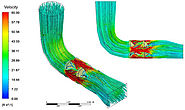
Hi-Tech provided a simulation solution to predict the mixture uniformity inside the inlet duct, designed for a customized regenerative thermal oxidizer developed by a leading air pollution control systems manufacturer from USA.
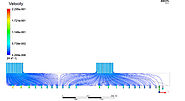
A leading fuel cell stack manufacturer from China needed a design solution for the cooling component, in order to equally distribute the liquid across all the channels. The existing design was required to be virtually tested to understand the flow distribution and further modifications in the design was required.
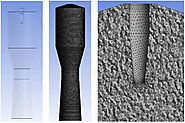
A leading process equipment manufacturer from U.S., needed to evaluate the nozzle design and identify mean droplet diameter, in order to improve the scrubber efficiency.

The oil tank was developed through CAD tools and the air flow domain was identified based on the oil height level.
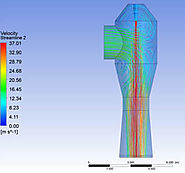
A leading process equipment manufacturer from US utilized our simulation capabilities to perform design optimization of the venture scrubber for effective filtration of the gas.
